
In the course of three days I had passed through the Jubilee Doors of all four of Rome’s major basilicas. With the passage through the doors at St. Peter’s came a sense of completion, yet also an awareness of a new beginning. A threshold had been crossed, literally and figuratively, and having crossed that threshold, it was no longer possible to “return to Egypt”. Invigorated with a renewed sense of Hope, looking decisively to the future, and with a deep sense of connection to millennia of history and those who lived it, I was ready to do some exploring. And St. Peter’s is definitely a place for exploration.
For an excellent PDF of the myriad tombs, shrines and significant artwork in St. Peter’s (not to mention some significant history) follow this link: 127-San Pietro in Vaticano
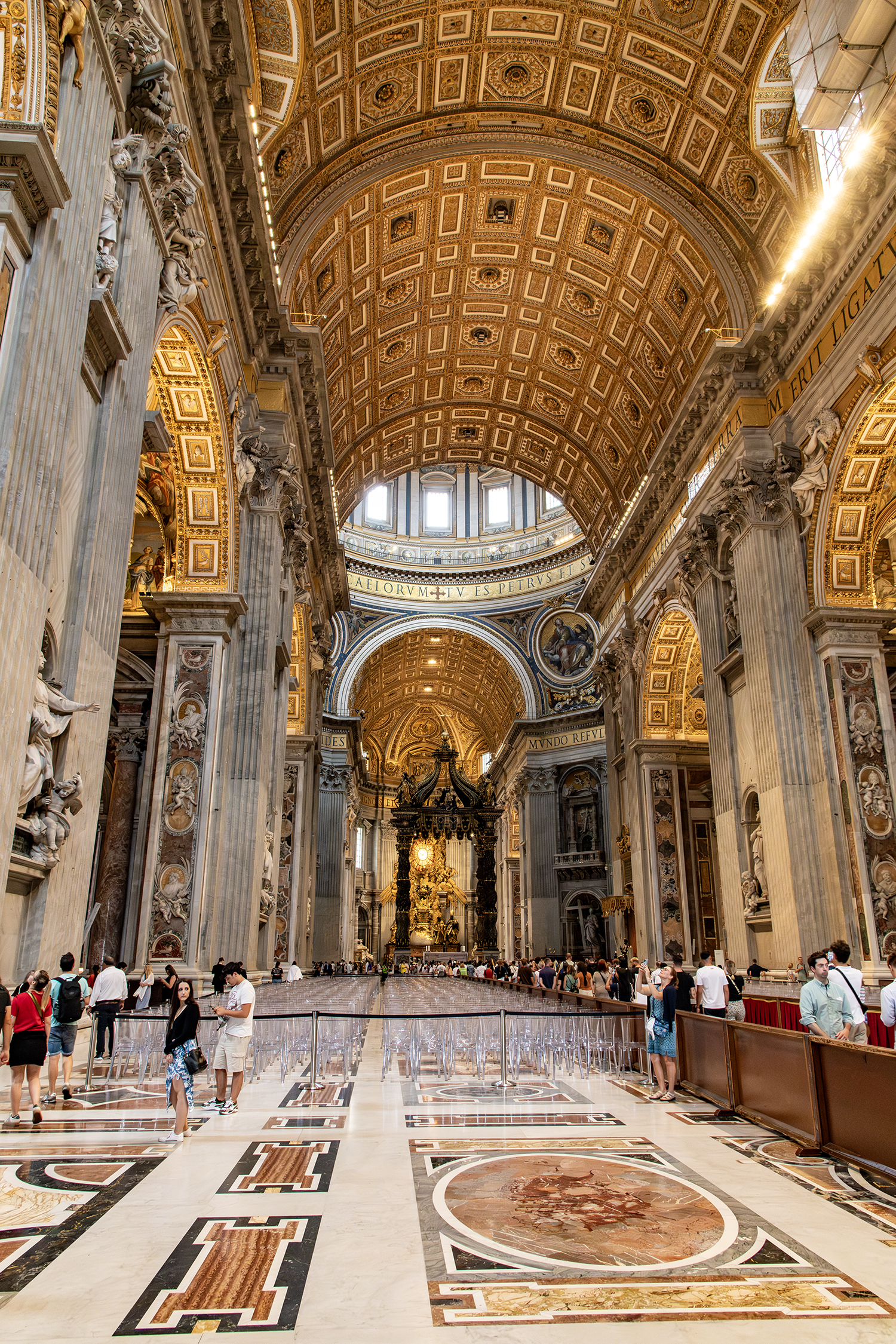
One cannot help but be impressed with the vastness of St. Peter’s nave (fig. 1). Extending some 650 feet (excluding the vestibule or narthex) this is largely the work of Carlo Maderno. The original plan of Bramante (subsequently enhanced by Michelangelo) was a centrally planned structure based on the ancient martyrium and patterned after a Greek cross. Maderno’s extension allowed all of the ground covered by the old Constantinian basilica to be included within the walls of the new structure.
Gian Lorenzo Bernini, of course, famously executed the great baldacchino over the confessio and the cathedra Petri in the apse. (fig 2, 3). Bernini enjoyed the enthusiastic patronage of Pope Urban VIII, who essentially turned the city over to the artist and his workshop. Ironically, Bernini is buried in Sta. Maria Maggiore, not St. Peter’s. Pope Urban VIII was of the Barberini family, who’s coat of arms featured bees. It is widely said that it is the bees of the Barberini family which decorate the baldacchino over the papal altar. (fig. 4) However, it must be pointed out that bees, particularly the hive, were an important symbol of the Church in antiquity. The Exultet, or Easter Proclamation, includes references to the bees who produced the wax for the Paschal candle.


In many ways, St. Peter’s is reminiscent of this metaphorical hive. Not only does it swarm with papal tombs (fig 5,6a-b), but many other significant saints and individuals are also buried or commemorated here (fig 7)
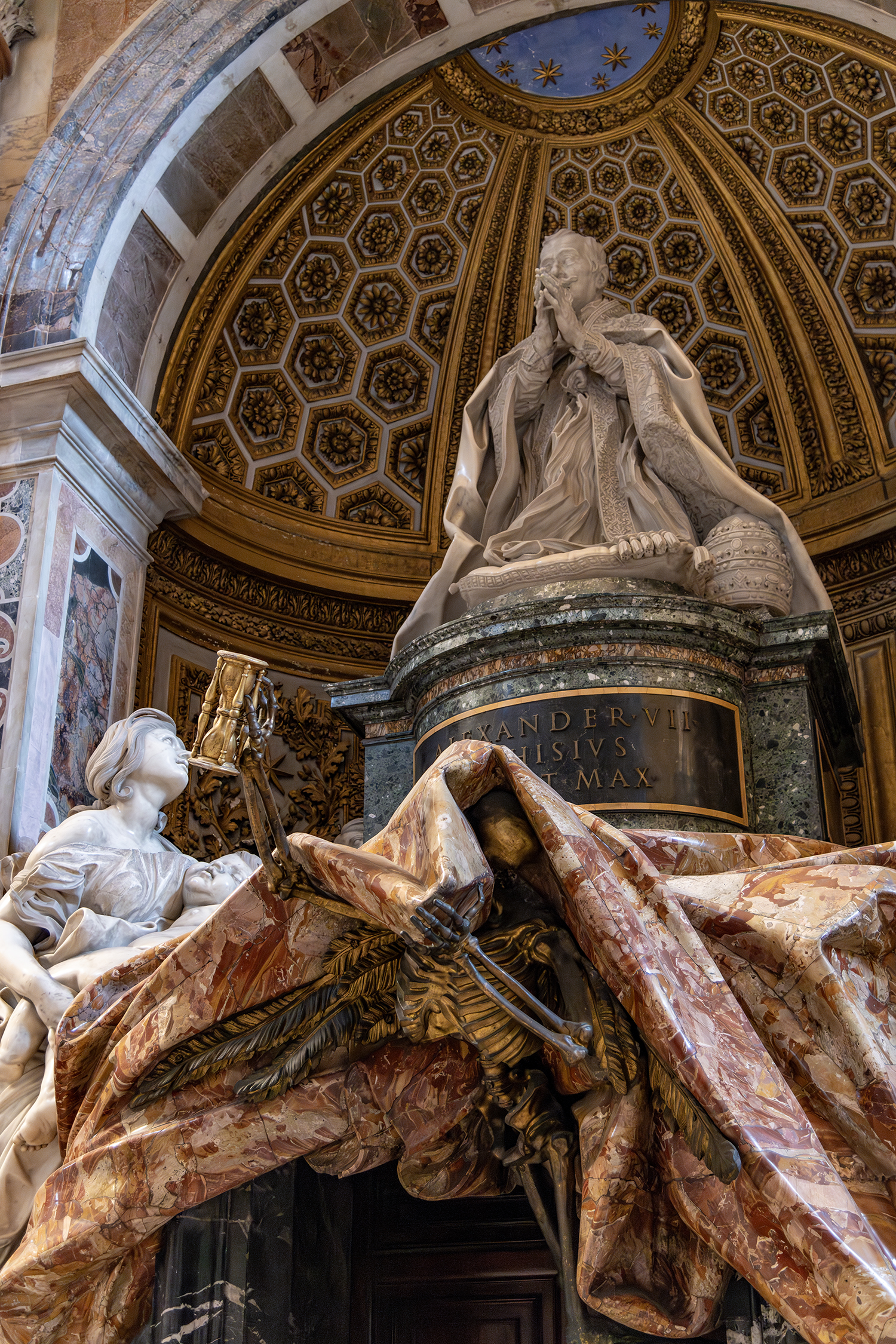
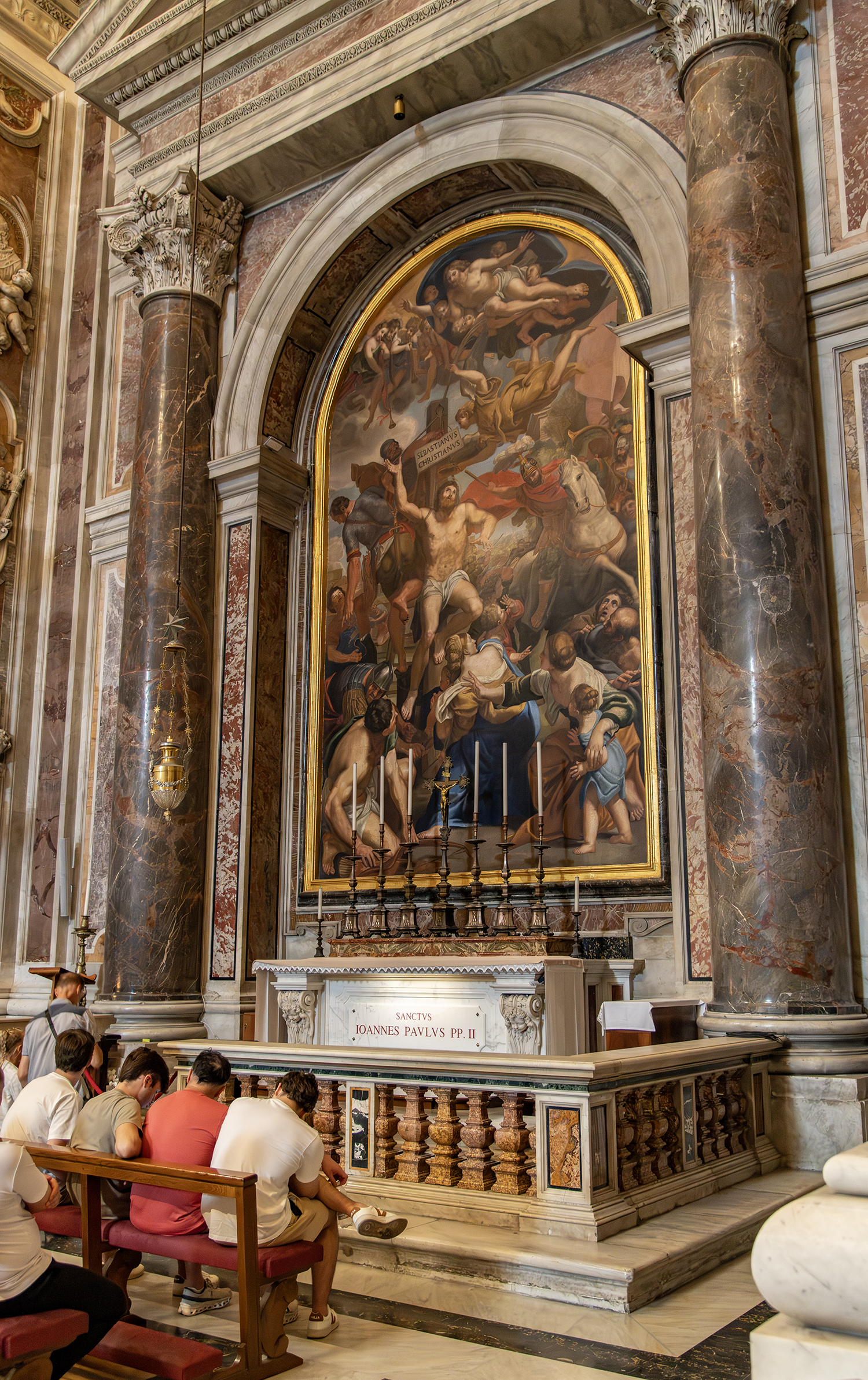
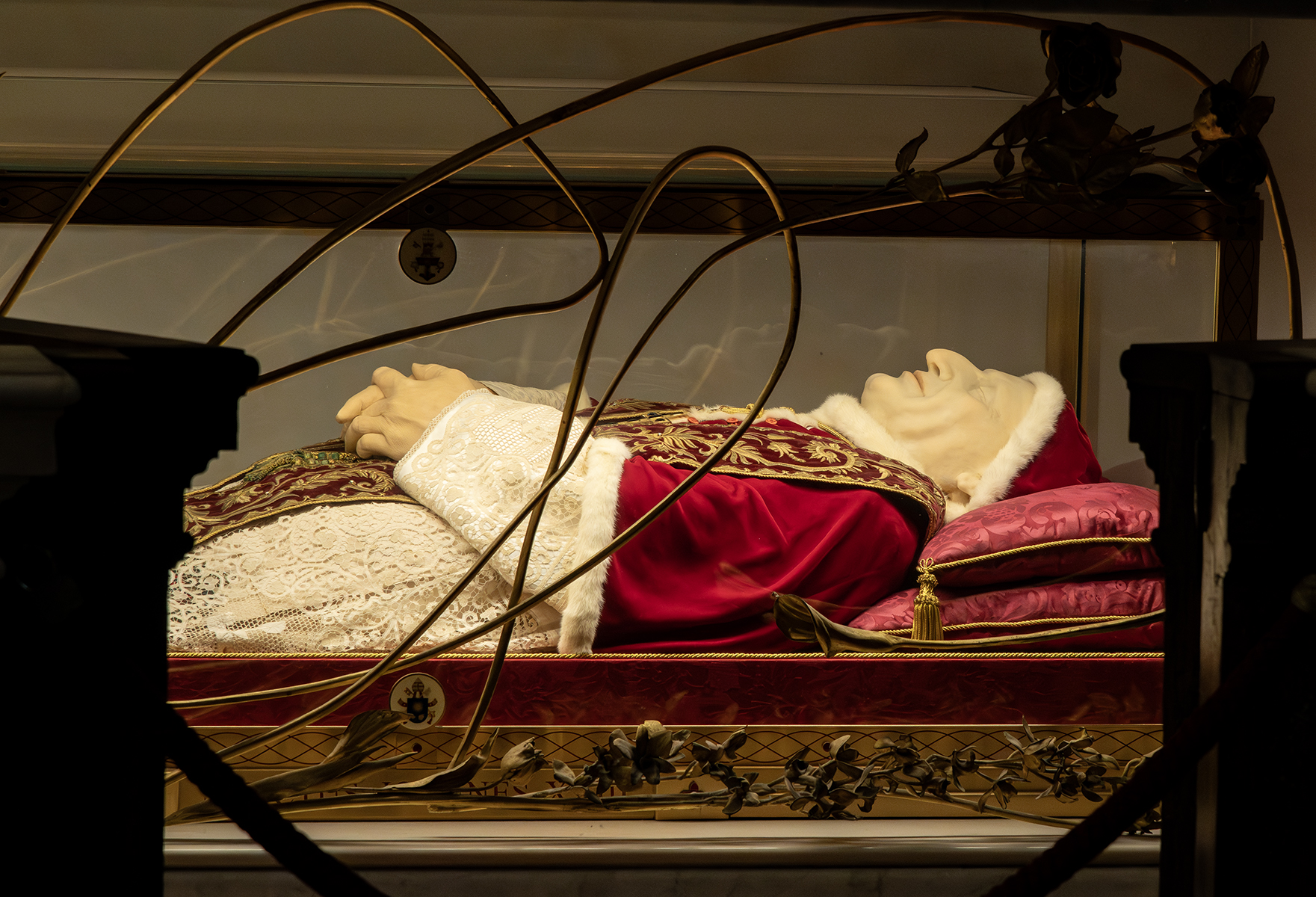
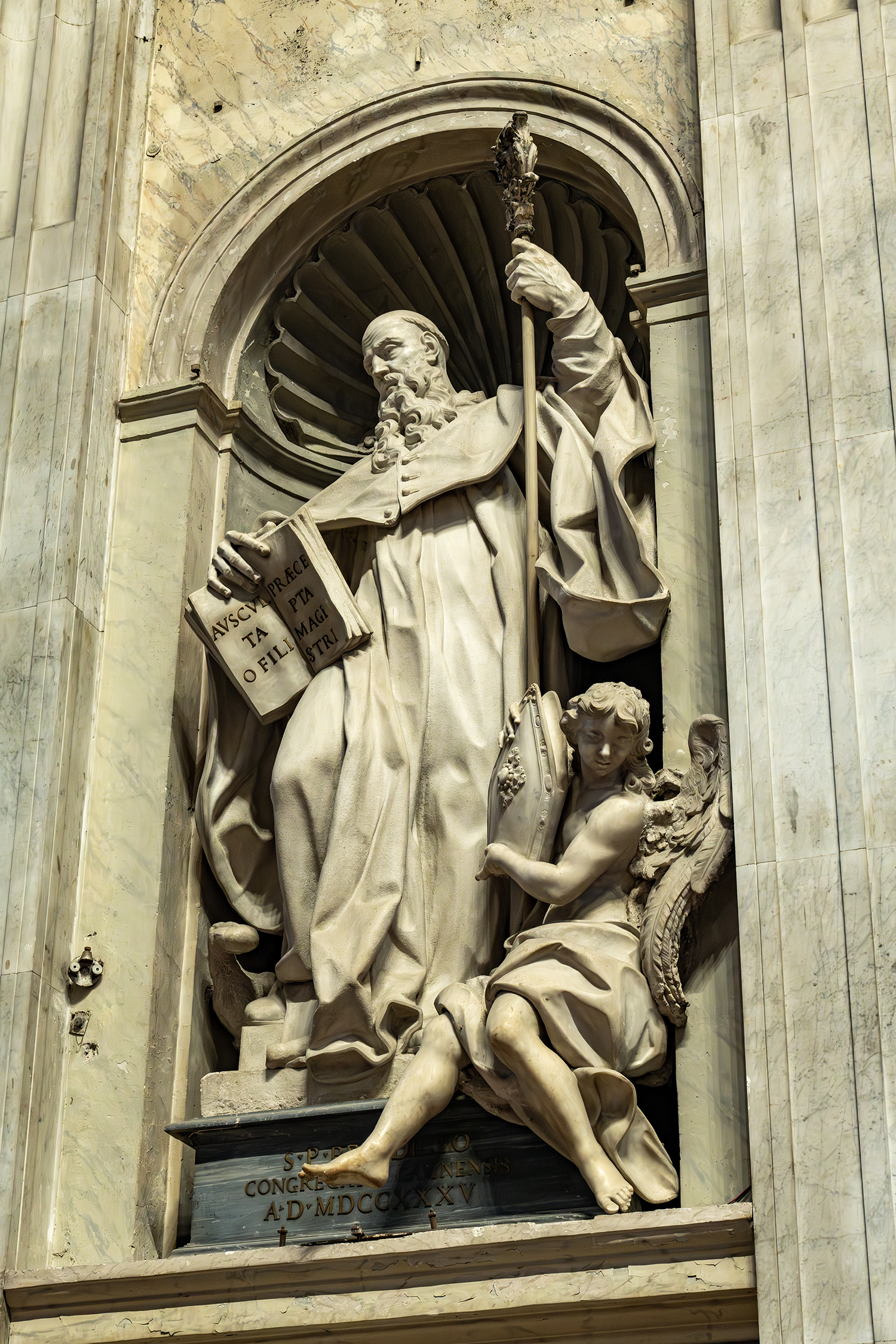
The basilica’s history as a pilgrimage site going back to the first century expands this symbolic hive to the living, past, present and future. The millions of pilgrims who have journied to pray in this place since the execution of St. Peter himself form a diverse People united in Faith centered on Christ, just as the hive consists of generations of bees centered on service to the queen. The bee finds its worth and fulfillment in service to the larger community of the hive. Such dedication is essential to the hive’s survival, just as for the Christian service to Christ through others, particularly the poor, marginalized, and suffering is essential. (For an excellent reflection on the “blessed bee” follow this link Praised Bee - Marklin Candle Design). Service to others is, in fact, incumbent upon all in the Church, including – perhaps most especially – clergy including the pope. One of the pope’s most significant titles is “servant of the servants of God.”
Just as the hive is centered on the queen, the Church is centered on Christ. This is symbolized in St. Peter’s by Michelangelo’s great dome over Bernini’s baldacchino over the papal altar, itself over the tomb of St. Peter, who in a special way represents the total self-giving to Christ. (fig 8). Light from the heavenly realm floods the crossing of the church just as the Light of Christ floods the Church. The Holy Spirit descends upon the gifts at the altar, which become for us “the bread of Life”, the Real Presence through which Christ is with us always and by which we are made his witnesses, even to the ends of the earth.
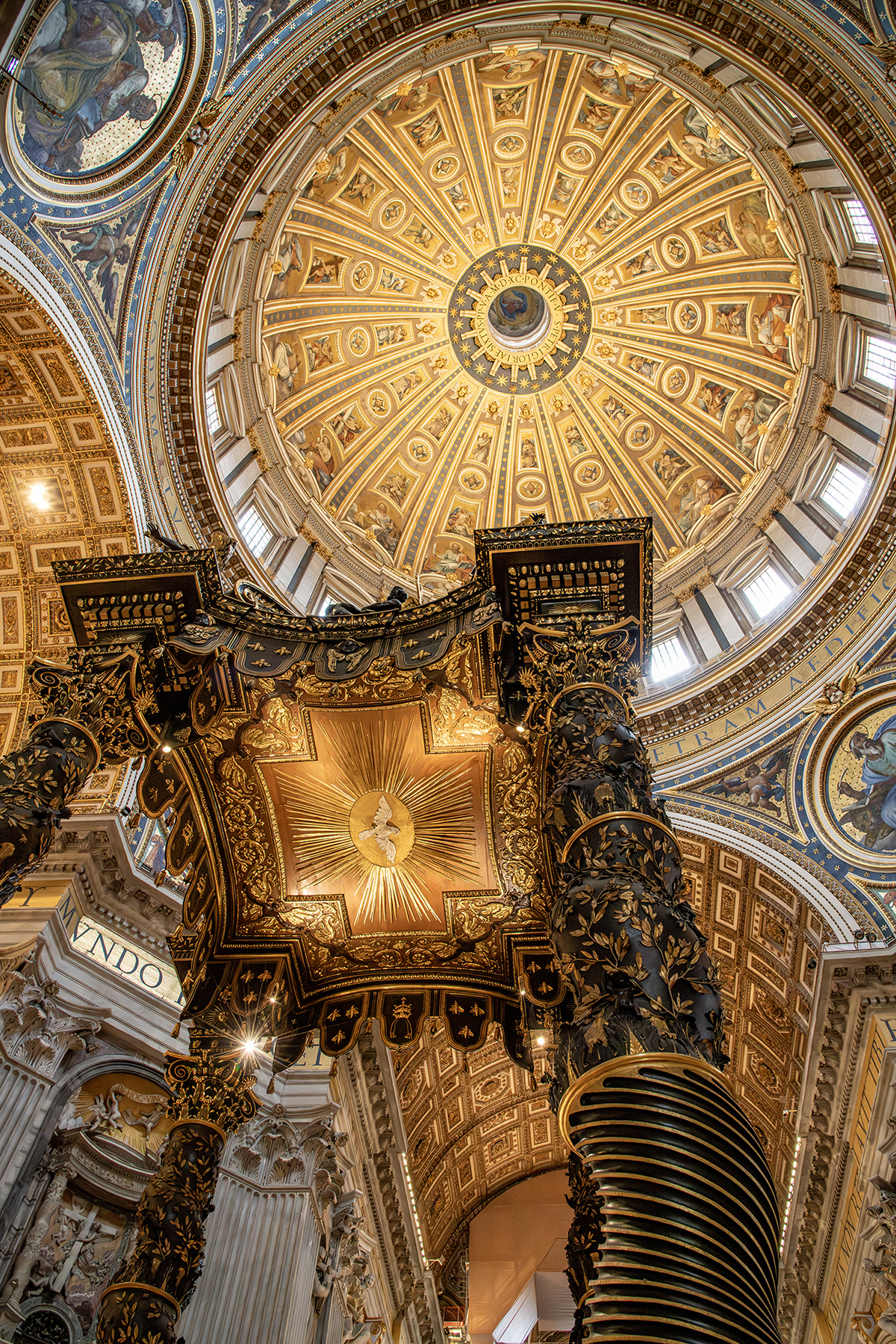
The same Holy Spirit gives light and guidance to the Church in the symbolism of Bernini’s Cathedra Petri in the basilica’s apse. (fig. 9) According to legend, the acadia wood framework within Bernini’s bronze chair is that of St. Peter himself. Authentic or not, the symbolism of the radiant Holy Spirit window, lit naturally by the sun, illuminates metaphorically the teaching of the Apostle. That teaching is preserved and transmitted by the great bishop-theologians, Saints Ambrose, Augustine, Athanasius and John Chrysostom. But these bishops do not possess this light from themselves or their own wisdom, but rather only insofar as they are open to the Holy Spirit and centered on Christ (Christ, in this case, being symbolized by the altar).

The single image in the basilica which I find most profoundly representative of this vast community of Faith is the medieval figure of St. Peter attributed to Arnolfo di Cambio (though some suggest it is older). (fig 10) This sculpture has been the focus of pilgrims from the entire Christian world for centuries. Evidence of the presence of faith of so many is immediately seen in the extremely worn foot of the Apostle. It was at this image in 1989, after participating in Mass, that I first witnessed the true catholicity of the Church. Pilgrims from Africa, Asia, the Americas and Europe, laity, religious, men, women, old, young had come here moved by the Faith proclaimed by a martyred Jewish fisherman. Like Peter, they had been changed by their encounter with the risen Christ that he announced, and in that transformation, they come here, finding inspiration and strength to live in Faith, Hope and Charity.

Bees, of their nature, are pollinators. Their centered service to the queen has as its consequence the world’s fruitfulness, and in that fruitfulness is life. In a real way, St. Peter’s basilica reveals that from pauper to pope, all are bees in the great hive of the Church, who, by being centered on Christ, renew the face of the earth into eternal life.